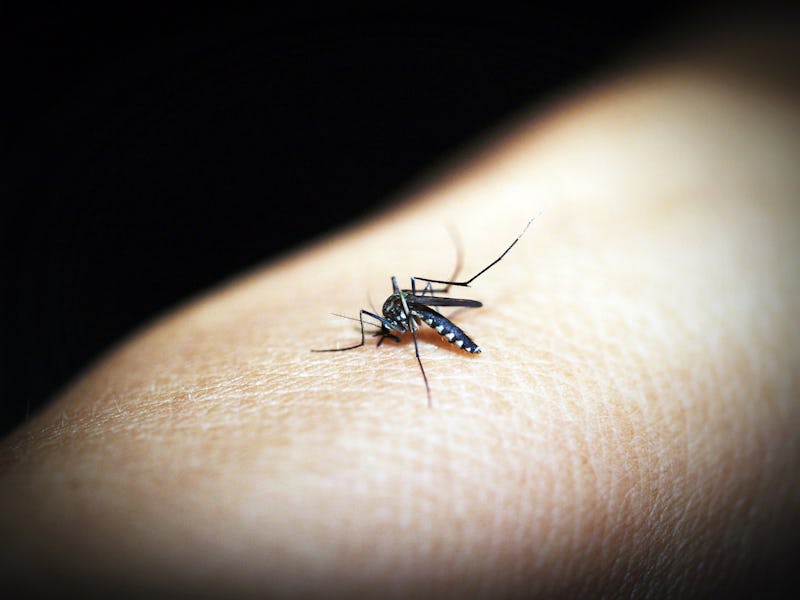Florida, Massachusetts, Michigan EEE maps show a spike in 2019 for cases
2019 has brought alarming uptick in the mysterious mosquito-borne virus.

This summer has been the worst season in decades for a rare, mysterious mosquito-borne virus called Eastern equine encephalitis (EEE), or “Triple E.”
Last week, a 78 year-old carpenter from Freetown, Massachusetts, died after contracting EEE. He was the second victim to die from EEE in a single month, and the tenth human case, reported the Massachusetts Department of Public Health.
(Typically, an average of seven cases are reported per year, nationwide.)
But in 2019, there have been a reported 27 cases so far in six states, the highest spike in recent history.
Yearly Reported EEE Cases in the United States from 2009 to 2018
These alarming rates of infection and death have put communities across the Eastern seaboard, Gulf Coast, and Great Lakes on high alert for Triple E. Public spaces are closing dusk until dawn, parents are shuttering their children inside, and people are dousing themselves in insect repellent to avoid exposure to EEV infected mosquitoes.
In a warming world, which may make these vector-borne diseases more common, knowing how to defend against the rare and deadly disease, EEE, will be critical.
What is EEE?
EEE is an arbovirus, spread by blood-sucking mosquitoes in humid, swampy areas. The disease affects humans, but other mammals as well: horses and birds. It can’t be passed from one person to another, or from an infected animal to people. The only way to become infected with EEE is being bitten by a mosquito carrying the disease. There is no vaccine to defend against EEE.
EEE is most common in hardwood swamps near rivers or freshwater bodies.
EEE is less common than other arboviruses like West Nile, but more severe. Symptoms of infection come on suddenly: chills, fever, malaise, as well as joint and muscle pain. The infection can last one to two weeks and recovery is complete when there is no central nervous system involvement.
Even if you are an unlucky soul bit by a mosquito carrying EEEV, you won’t necessarily contract the disease. Only four to five percent of people infected with EEEV develop EEE. But if you do contract the disease, the consequences can be lethal. The CDC reports that about a third of people with EEE die from the disease.
When EEEV progresses more severely to EEE, or encephalitis, people can experience fever, headache, irritability, restlessness, drowsiness, anorexia, vomiting, diarrhea, cyanosis, and convulsions four to ten days after being bitten. EEE can trigger brain infection and swelling, and lead to coma and death.
Patients usually die just two to ten days after the initial onset of symptoms, while some pass away later. Many patients who survive are left with disabling and progressive mental and physical damage, ranging from “minimal brain dysfunction to severe intellectual impairment, personality disorders, seizures, paralysis, and cranial nerve dysfunction,” according to the CDC. Many patients with severe conditions stemming from EEE die within a few years.
EEE can cause serious illness and lead to death in people of all ages, but people under age fifteen or over fifty are more susceptible to falling ill. People who work or play outdoors, runners, landscapers, or hikers should also be especially careful to avoid exposure.
Where is EEE found? US Map Shows Its Rarity
EEE is extremely rare, and localized in and around freshwater hardwood swamps near the Atlantic coast, Gulf Coast states and the Great Lakes region.
Number of reported EEE cases by state from 2009–2018
Infections are highest seasonally, from late spring to early fall. EEE cases rarely occur in winter.
Massachusetts EEE Map 2019
Massachusetts has been one of the hardest hit states this year. Public health officials have created an interactive map to pinpoint certain community’s risks of exposure to the EEE.
Massachusetts has been racked with EEE. Communities have issued public warnings cautioning people to stay indoors from dawn to dusk.
Michigan EEE Map 2019
Michigan has seen the worst EEE outbreak in a decade.
There have been seven reported human cases of EEE in Michigan this year alone.
Florida EEE Map 2019
Florida have seen more cases of EEEV in flocks of chickens, with the potential for the same carrier mosquitos to spread the disease to Floridians.
The light blue counties have seen 1-3 EEE cases in 2019.
How to protect against EEE
Again, EEE is rare. Unless you live in one of the swampy areas highlighted in the maps above, it is unlikely you will contract the disease. But, to be on the safe side, the key to prevention is not getting bitten in the first place.
There are a few easy and affordable ways to protect yourself and your family: use EPA approved insect repellent, wear long sleeves and pants, and avoid being outdoors from dusk to dawn, when mosquitoes are most active. Remove pools of standing water and seal windows and doors. High risk communities may consider cancelling that evening football game or sunset concert to avoid exposure.
As the temperature drops with winter approaching, so will the risk of contracting EEE. But again, as we look towards hotter and longer summers in the future, people will need to stay vigilant against the rare, but deadly disease.
Correction 9/24/19: This article includes an image of a mosquito at the top. This report previously included an image of another type of insect.